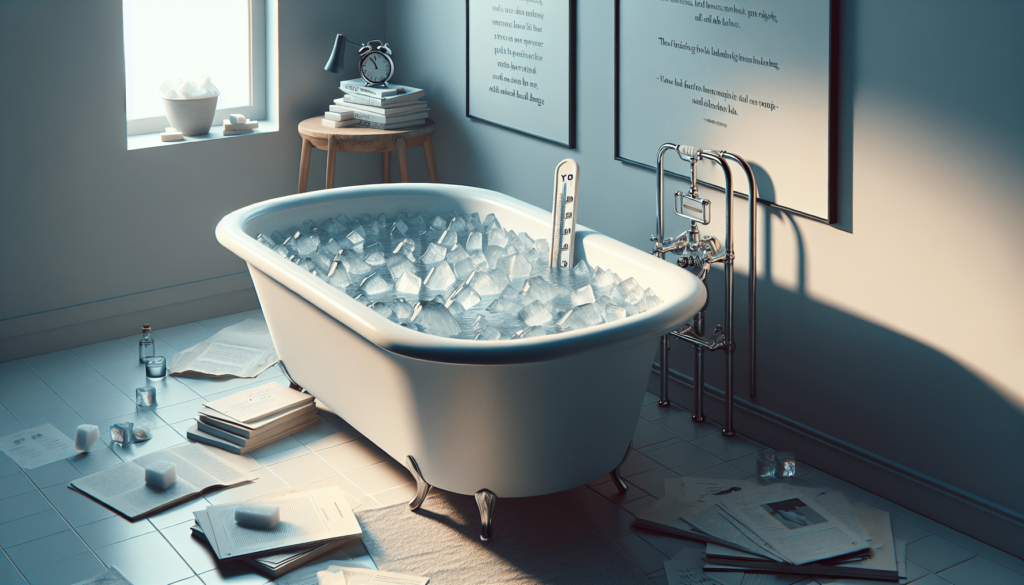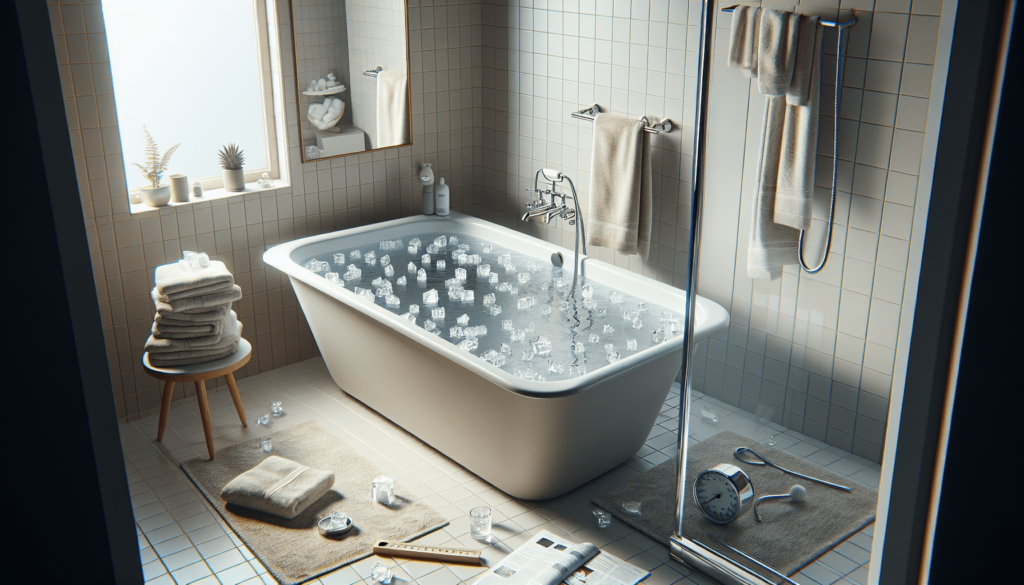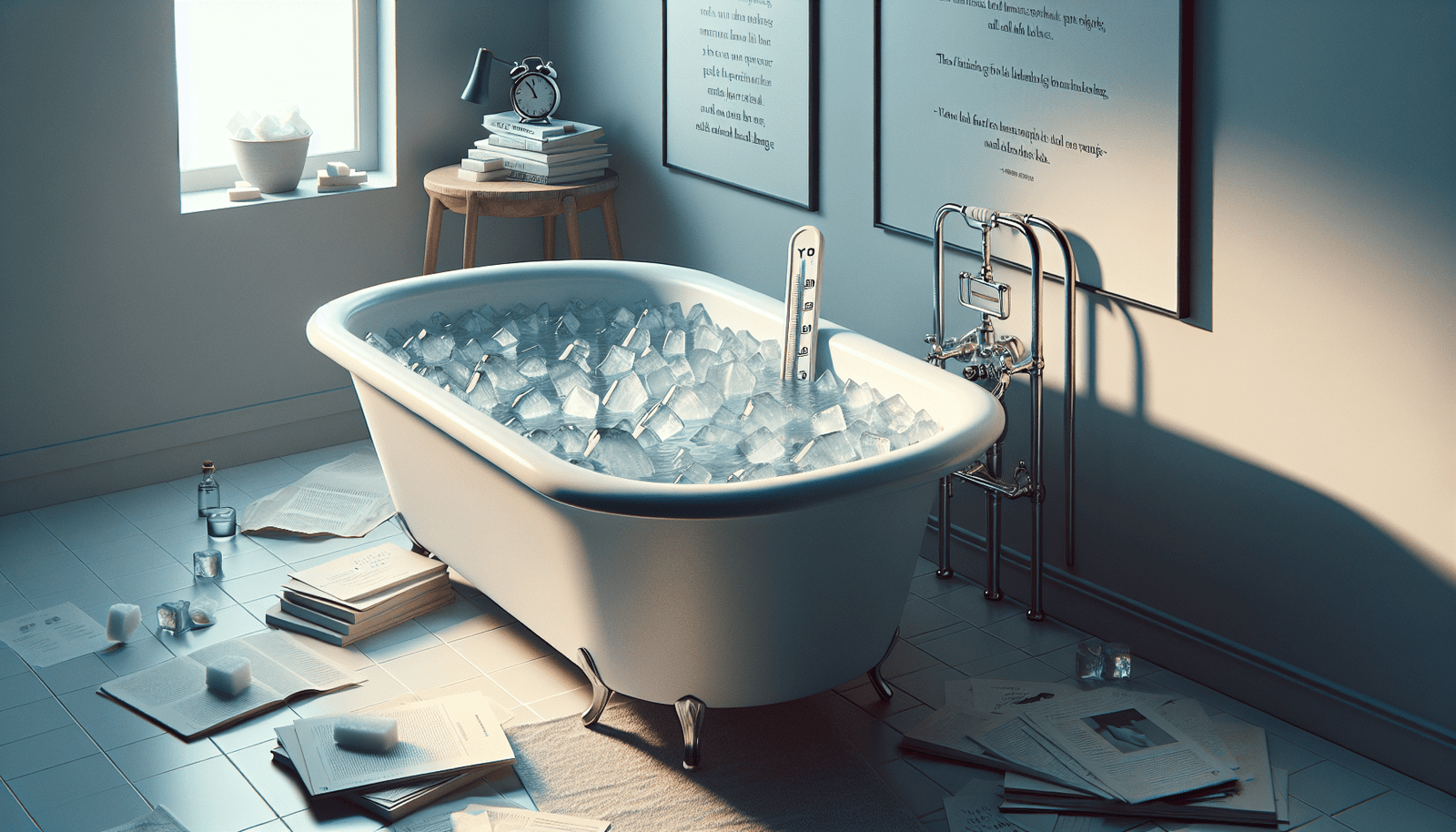Picture this: you’ve just finished an intense workout and your body is in dire need of some refreshing rejuvenation. The idea of a cold plunge comes to mind, but alas, you don’t have a designated tub for such a purpose. But wait, can you use your regular tub for a cold plunge? In this article, we’ll explore whether your trusty bathtub can double as the perfect spot for a chilling cold plunge experience. Get ready to discover the answer you’ve been looking for!

What is a cold plunge?
A cold plunge is a form of hydrotherapy that involves immersing your body in cold water for a short period of time. This practice has been used for centuries and is believed to have numerous health benefits. Cold plunges are often taken after intense physical activity or as part of a wellness routine to promote recovery and improve circulation.
Definition of a cold plunge
A cold plunge is typically defined as submerging the body in water that is kept at a temperature between 50 to 59 degrees Fahrenheit (10 to 15 degrees Celsius) for a short duration of time, usually around 5 to 10 minutes. The water temperature is significantly lower than what one would typically find in a regular bath, making it a shock to the system. The sudden change in temperature is believed to stimulate the body’s natural healing processes and provide a range of health benefits.
Benefits of a cold plunge
There are many benefits associated with cold plunge therapy. Some of the key advantages include:
-
Muscle recovery: Cold water immersion can help to reduce muscle soreness and inflammation after intense physical activity. It constricts blood vessels, reducing the accumulation of metabolic waste products and promoting faster recovery.
-
Improved circulation: The cold water causes blood vessels to constrict, which can enhance circulation. This can improve the delivery of oxygen and nutrients to tissues and organs, promoting overall cardiovascular health.
-
Enhanced immune function: Cold plunges have been found to boost the immune system by increasing the production of white blood cells, which play a crucial role in fighting off infections and diseases.
-
Stress reduction: Immersing oneself in cold water has a stimulating effect on the body, triggering the release of endorphins and neurotransmitters that can improve mood and reduce stress levels.
-
Mental clarity and focus: Cold plunges are reputed to improve mental alertness and cognitive function. The shock of the cold water stimulates the central nervous system, promoting mental clarity and focus.
-
Improved skin health: Cold water can help to tighten the pores and reduce inflammation, leading to healthier and clearer skin.
The purpose of a dedicated cold plunge tub
While a regular bathtub can be used for a cold plunge, some individuals prefer to have a dedicated cold plunge tub. Here are some reasons why:
Ideal temperature for a cold plunge
A dedicated cold plunge tub allows you to maintain the ideal temperature range of 50 to 59 degrees Fahrenheit (10 to 15 degrees Celsius) more easily. Regular bathtubs may not have the same level of insulation, making it harder to keep the water consistently cold for an extended period of time.
Depth and size requirements
Cold plunge therapy often involves immersing the entire body or a significant portion of it. A dedicated cold plunge tub is typically deeper and has sufficient space to comfortably accommodate the body, allowing for a more effective and enjoyable experience.
Materials used in dedicated cold plunge tubs
Many dedicated cold plunge tubs are made from high-quality materials such as stainless steel or fiberglass, which are known for their durability and resistance to temperature extremes. These materials help to retain the cold temperature and ensure the tub can withstand regular use and exposure to cold water.
Using a regular tub for a cold plunge
While a dedicated cold plunge tub offers certain advantages, it is still possible to use a regular bathtub for a cold plunge. Here are some considerations:
Temperature limitations
Regular bathtubs may not offer the same level of temperature control as a dedicated cold plunge tub. The water in a regular tub may warm up more quickly, requiring more frequent additions of ice or cold water to maintain the desired temperature.
Size and depth considerations
Regular bathtubs may be narrower and shallower compared to dedicated cold plunge tubs. This can limit the immersion and overall effectiveness of the cold plunge experience, especially for individuals who prefer to submerge their entire bodies.
Materials and insulation
Regular bathtubs may not be as well-insulated as dedicated cold plunge tubs. This means that the water in a regular tub may lose heat more quickly, potentially reducing the overall effectiveness of the cold plunge therapy. Additionally, the materials used in regular bathtubs may not be as durable or temperature-resistant, making them more susceptible to wear and tear over time.
Advantages of using a regular tub for a cold plunge
While a dedicated cold plunge tub has its merits, there are also advantages to using a regular bathtub for a cold plunge:
Cost-effectiveness
Using a regular tub for a cold plunge is a more affordable option for those on a budget. Most households already have access to a bathtub, eliminating the need for an additional investment in a dedicated cold plunge tub.
Convenience
Regular bathtubs are readily available in most homes and can be easily accessed for a cold plunge whenever needed. This convenience allows for more frequent and accessible cold plunge sessions without the need for extra planning or preparation.
Availability
Because regular bathtubs are so common, finding a suitable tub for a cold plunge is much easier. Whether at home, in a hotel, or at a friend’s place, the availability of a regular tub means that cold plunges can be enjoyed in a variety of settings.

Disadvantages of using a regular tub for a cold plunge
While using a regular bathtub for a cold plunge has its advantages, there are also a few drawbacks:
Inability to maintain low temperatures
Regular bathtubs may not have the same level of insulation as dedicated cold plunge tubs, making it more challenging to maintain the desired water temperature for an extended period of time. This limitation may require more frequent additions of ice or cold water to keep the temperature within the optimal range.
Lack of ideal size and depth
Regular bathtubs are often not as deep or spacious as dedicated cold plunge tubs. This can limit the immersion and overall effectiveness of the cold plunge experience, especially for individuals who prefer to submerge their entire bodies.
Insufficient insulation
Regular bathtubs may not provide adequate insulation to retain the cold temperature for an extended period. This can lead to faster heat loss and reduce the overall effectiveness of the cold plunge therapy.
Tips for using a regular tub as a cold plunge
If you decide to use a regular tub for your cold plunge sessions, here are some tips to enhance your experience:
Cooling methods
To maintain the desired water temperature, consider using ice packs, frozen water bottles, or bags of ice. These can be added to the tub periodically to help keep the water cold during your cold plunge session.
Adding insulating materials
To improve the insulation of the regular tub, you can line it with insulating materials such as foam or towels. These materials can help slow down heat loss and keep the water colder for a longer period.
Maintenance and cleaning
Regularly clean your regular tub to remove any debris or residue that may interfere with the cooling effect of the cold water. Make sure to follow proper cleaning and maintenance guidelines provided by the tub manufacturer.
Safety considerations
When using a regular tub or any type of cold plunge, it is important to prioritize safety. Here are some key considerations:
Monitoring water temperature
Regularly monitor the water temperature to ensure it stays within the optimal range. Use a reliable thermometer to check the water temperature before getting into the tub.
Ensuring proper ventilation
Proper ventilation is important during cold plunge sessions to prevent the build-up of humidity and condensation in the room. This can be achieved by opening a window or using a ventilation fan to allow air circulation.
Preventing slips and falls
Cold water can make surfaces slippery. Ensure the bathroom floor is dry and clear of any obstacles or loose items that may cause slips or falls. Use rugs or non-slip mats to provide extra grip and stability.
Alternatives to using a regular tub for a cold plunge
While a regular tub can serve as a viable option for a cold plunge, there are alternative options available for those seeking a more specialized experience:
Inflatable cold plunge tubs
Inflatable cold plunge tubs offer convenience and portability. These tubs are designed specifically for cold plunges and are made from durable and insulating materials. They can be easily set up and filled with cold water when needed and deflated for storage.
Outdoor cold plunge pools
For those with ample outdoor space, an outdoor cold plunge pool can be a fantastic option. These pools are designed to maintain lower temperatures and provide ample space for a full-body immersion. They often incorporate built-in insulation and temperature control systems for optimal cold plunge experiences.
Custom-built cold plunge tubs
For those who want a truly tailored experience, custom-built cold plunge tubs are available. These tubs can be designed to fit specific size and depth requirements and can incorporate features such as temperature control systems, hydrotherapy jets, and even lighting options.
Summary
In summary, while a regular bathtub can be used for a cold plunge, there are various considerations to keep in mind. Dedicated cold plunge tubs offer better temperature control, suitable size and depth, and durable materials. However, using a regular tub can be more cost-effective, convenient, and readily available. Additionally, there are alternatives such as inflatable cold plunge tubs, outdoor cold plunge pools, and custom-built cold plunge tubs for those seeking a more specialized experience. Ultimately, the choice between a regular tub and a dedicated cold plunge tub depends on personal preferences, budget, and the desired level of convenience and effectiveness.
Conclusion
A cold plunge can be a refreshing and invigorating practice with numerous health benefits. Whether you choose to use a regular tub or invest in a dedicated cold plunge tub, the key is to prioritize safety, monitor water temperature, and create an environment that promotes relaxation and rejuvenation. Experiment with different methods, cooling techniques, and insulation materials to enhance your cold plunge experience and enjoy the many advantages it offers. Stay cool, my friends!

